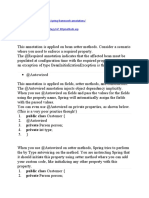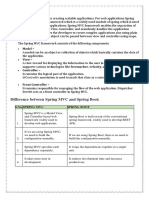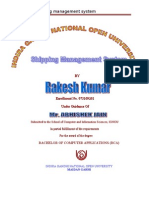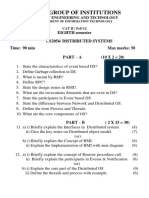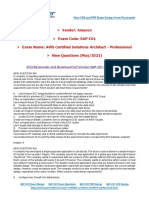0% found this document useful (0 votes)
48 views15 pagesSpring Boot Final
The document explains the concepts of Inversion of Control and Dependency Injection in the Spring framework, highlighting how Spring manages beans and their dependencies. It discusses the use of annotations like @Autowired and @SpringBootApplication, as well as the configuration of build tools like Maven and Gradle. Additionally, it covers the creation of controllers, services, and repositories in a Spring Boot application, along with the use of Spring Data JPA for database interactions.
Uploaded by
fipen98578Copyright
© © All Rights Reserved
We take content rights seriously. If you suspect this is your content, claim it here.
Available Formats
Download as DOCX, PDF, TXT or read online on Scribd
0% found this document useful (0 votes)
48 views15 pagesSpring Boot Final
The document explains the concepts of Inversion of Control and Dependency Injection in the Spring framework, highlighting how Spring manages beans and their dependencies. It discusses the use of annotations like @Autowired and @SpringBootApplication, as well as the configuration of build tools like Maven and Gradle. Additionally, it covers the creation of controllers, services, and repositories in a Spring Boot application, along with the use of Spring Data JPA for database interactions.
Uploaded by
fipen98578Copyright
© © All Rights Reserved
We take content rights seriously. If you suspect this is your content, claim it here.
Available Formats
Download as DOCX, PDF, TXT or read online on Scribd
/ 15































